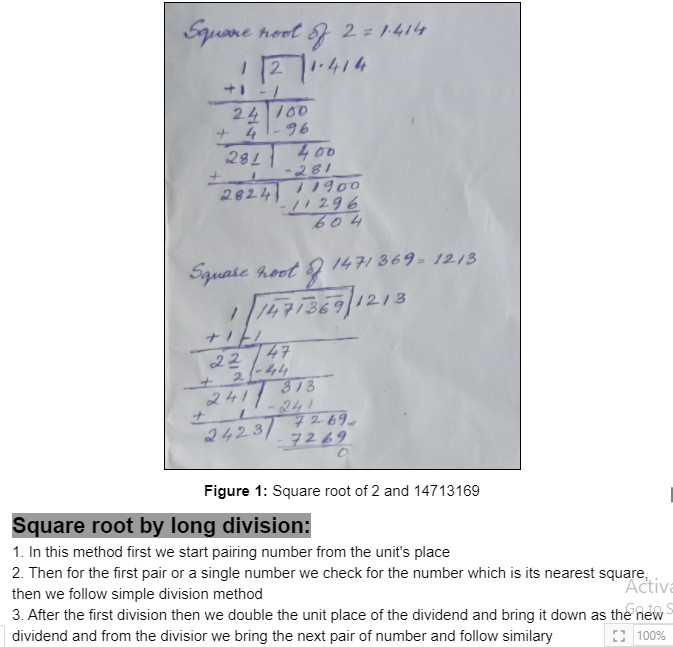Force - Class 9 Science
Important Points
Force - Force generally denotes push or pull. Force can :
i. produce motion
ii. stop motion
iii. change the direction of motion
iv. change the dimension in a body
The SI unit of Force is N
Newton's Laws of Motion
The SI unit of momentum is kgms-1
The SI unit of mass is kg
In a given system, when two or more bodies interact and no external force acts on them, the total momentum of all bodies is conserved.
Questions and Answers
- Give two examples from everyday life where the Newton's third law of motion comes into place. Ans. Example 1 - Rubber Ball rebounding: When we hit a rubber ball on the ground with some force(action), the ground reacts in opposite direction with an equal force and hence the rubber ball rebounds.
- Why does a boatman push the river bank backward with a long bamboo pole, on launching his boat in water? Explain. Ans. It is based on Newton's third law of motion. When the boatman standing in the boat, pushes the river bank backward with a long bamboo pole, the surface of the bank reacts back and pushes the pole in the forward direction. As the pole is in the hands of the boatman, standing in the boat, the whole system moves in the forward direction.
- Why is it difficult to walk on marshy land? Explain. Ans. It is based on Newton's third law of motion. When we push the marshy soil with our feet the soil yields. Thus, the reaction of the marshy soil is not as much as the action done on it. This makes it difficult to walk on marshy land.
- Why does a boatman push water backward with the oars, while rowing a boat? Explain. Ans. It is based on Newton's third law of motion. When a boatman pushes water backward with the oars then water also exerts a reaction force which enables the boat to move forward.
- Why does a boatman tie his boat to a pillar, before allowing the passengers to step on the river bank? Explain. Ans. When the passengers start disembarking, they push the floor of the boat backward with the feet. Now the boat is in water, and the water yields under the impact of this force. Thus, the boat starts sliding backward. To avoid the boat from sliding backward into water, the boatman ties his boat with a rope to a pillar before allowing passengers to disembark.
- Why do the birds flap their wings downward while taking a flight? Explain. Ans. It is based on Newton's third law of motion. When the birds flap their wings downward they do action on the wind. The wind in turn reacts back and pushes the wings and hence the birds fly in the upward direction.
- Do the action and reaction act on the same body or different bodies? How are the action and reaction related to each other in :
(a)magnitude and (b)direction? Do they act simultaneously or not?
Ans. Action and reaction act on two different bodies. Action and reaction are equal in magnitude but they act in opposite directions so there is simultaneous action and reaction. - Why does a gun recoil backward when fired? Explain. Ans. When the bullet under the impact of exploding gun powder moves out of the barrel from gun with a certain momentum, the gun, in order to conserve momentum, moves with the same momentum (momentum equal to that of bullet) in backward direction. So the net momentum is again zero. Thus, the gun recoils backward.
- Why does an inflated baloon rise up vertically for some distance, when punctured from below? Explain. Ans. Initially, the balloon and the air in it, are in a state of rest and hence, have zero momentum. However, when the balloon is punctured from below, the air rushes out of it in downward direction with a certain momentum. Thus, in order to conserve momentum the balloon rises up vertically with the same momentum.
- Why do the pieces of cracker fall in all directions when it is burst? Explain. Ans. When a cracker is not burst the momentum of the cracker is zero. When it is being burst the pieces move in all directions with certain momentum. However, if we add up the momentum of various pieces, the sum total of momentum will be zero.
- Why is it easier to stop a tennis ball than a cricket ball, moving at the same speed? Explain. Ans. It is easier to stop a tennis ball than a cricket ball, moving at the same speed because the momentum of the cricket ball will be more compared to the tennis ball as the latter's mass is higher than the former's mass hence force required to stop the tennis ball will be less compared to the cricket ball.
Example 2. Hurting of hand when we hammer a nail on a wodden plank - When we hit a nail with hammer on a wooden plank we apply a force then the nail reacts back with equal force on the hammer. As the hammer is held firmly in our hand, therefore, we feel hurt in our hand.























